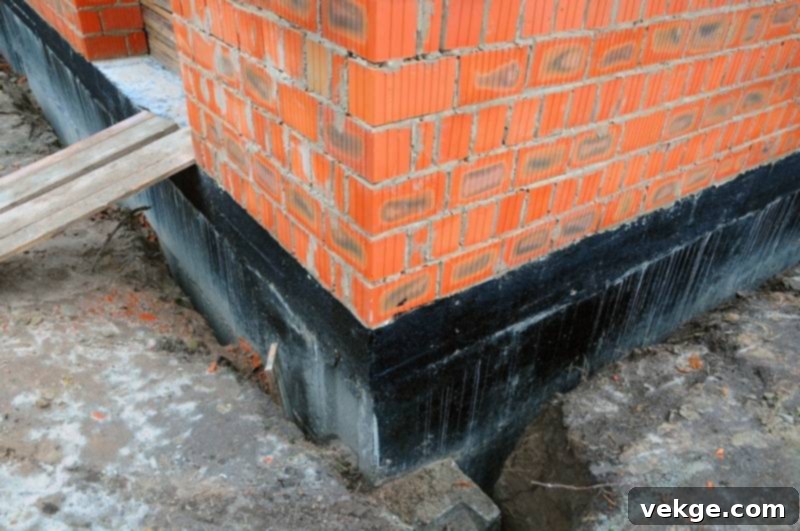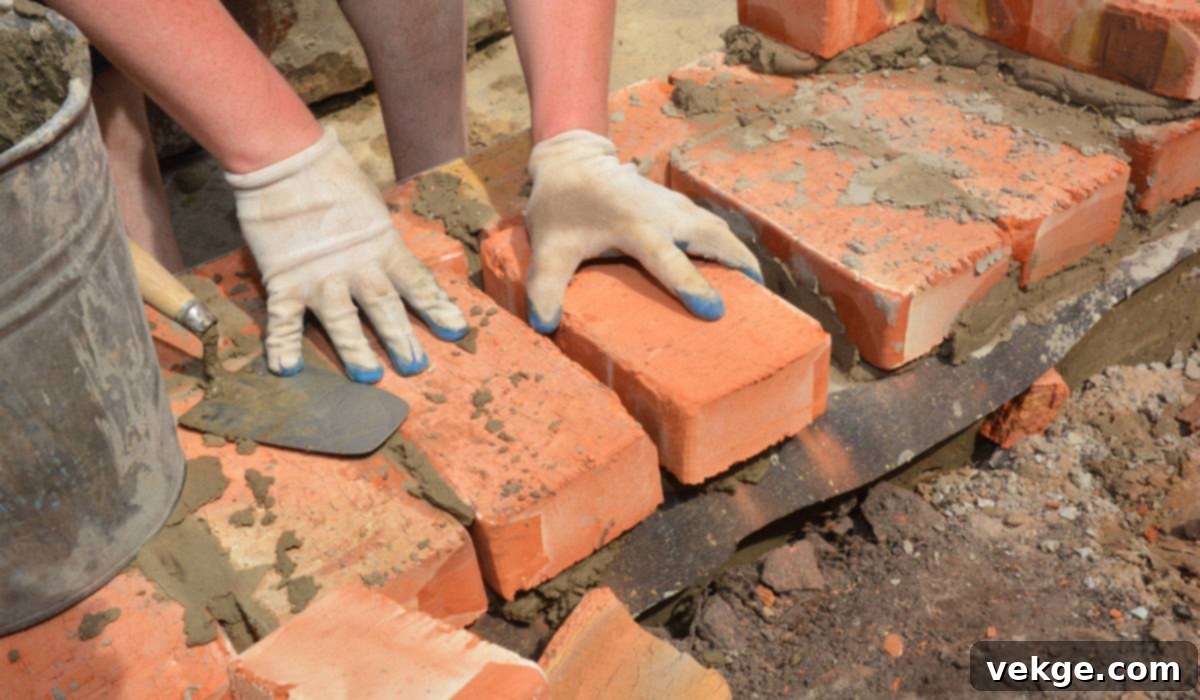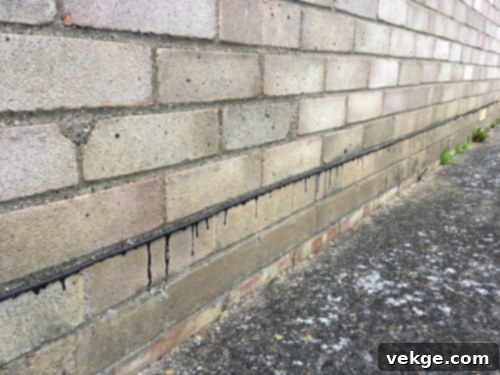Mastering Home Protection: Your Comprehensive Guide to Damp Proof Course (DPC) and Rising Damp Prevention
For countless homeowners and landlords, the challenge of maintaining a dry, healthy property often involves a persistent battle against dampness. This common issue, if left unaddressed, can lead to significant structural damage, unsightly aesthetics, and even adverse health effects. Fortunately, a highly effective solution exists in the form of a damp proof course (DPC). Understanding and investing in a reliable DPC treatment is not just about fixing a problem; it’s about proactively safeguarding your building’s integrity and value for years to come. Property owners, in particular, should consider this essential measure to protect their valuable assets from the insidious effects of moisture infiltration.
What Is a Damp Proof Course (DPC)?
At its core, a damp proof course is a specialized barrier designed to halt the upward movement of moisture within walls, a phenomenon commonly known as rising damp. Rising damp problems occur when ground-level water is absorbed and drawn upwards into the porous materials of a building’s walls through a process called capillary action. Imagine a sponge soaking up water; this is a similar principle at play within brickwork and mortar. Without an effective barrier, moisture can steadily ascend, leading to widespread damage. A properly installed DPC acts as an impermeable shield, effectively preventing this capillary action and ensuring that moisture from the ground cannot penetrate the structure above a certain level.
Historically, DPCs were constructed from physical materials like slate, bitumen, or plastic inserted into a mortar joint. Modern solutions often involve chemical injections, providing a less invasive and highly effective alternative for existing properties. Regardless of the method, the objective remains the same: to create an enduring barrier against ground moisture, preserving the dryness and stability of your home’s walls.
How Do Damp Proof Courses Work? Exploring the Different Methods
While the ultimate goal of all damp proof courses is to prevent rising damp, the methods by which they achieve this vary significantly. There are two primary types of damp proof courses, each employing distinct scientific principles to combat moisture. Both are recognized as effective damp proofing solutions, though chemical damp proof courses are generally more prevalent and widely adopted in modern renovation and damp treatment projects.

The Two Primary Types of Damp Proof Course
When considering a damp proofing solution for your property, you’ll typically encounter these two main options:
- Chemical Damp Proof Course (DPC)
- Electro-Osmotic Damp Proof Course (DPC)
While both methods offer robust protection against rising damp, the chemical injection method tends to be the more popular choice for many property owners due to its versatility and established track record. It’s crucial to understand that these two types operate on fundamentally different principles and require distinct installation processes, making professional assessment vital for determining the most suitable option for your specific property.
Chemical Damp Proof Course (DPC) Installation and Functionality
A chemical damp proof course involves a precise and systematic process designed to introduce a water-repellent barrier into the masonry. When undertaken on internal walls, the procedure typically begins with the removal of internal plaster, carpet, and skirting boards to expose the brickwork. A specialist, such as those from Damp Hero, will then carefully drill a series of holes into the mortar joints at a specific height, usually just above ground level, to effectively cut off the capillary path for rising moisture. These holes are then injected with a specialized damp proofing cream or fluid, often silicone-based. This chemical then diffuses within the masonry, penetrating the capillaries and pores of the bricks and mortar. As it cures, it forms a continuous, invisible, water-repellent barrier. This newly formed membrane prevents moisture from the ground from being drawn upwards, effectively halting rising damp. Once the chemical has fully cured and dried, the drilled holes are sealed, and the wall can be re-plastered and redecorated, bringing the property back to its pristine condition.
For external walls, the installation process for a chemical DPC at ground level might necessitate additional excavation. This could involve carefully digging away soil or concrete, especially in areas adjacent to pathways or gardens, to expose the external wall to the appropriate depth for drilling and injection. This ensures a comprehensive and continuous barrier around the entire property perimeter.
Electro-Osmotic Damp Proof Course (DPC) Principles
In contrast to the chemical injection method, an electro-osmotic damp proof course works by leveraging a low-voltage electrical current to reverse the natural process of capillary action. This innovative system involves the strategic insertion of a series of titanium or copper anodes into the wall, often at regular intervals, which are then connected to a control unit. This unit generates a very subtle, harmless electrical charge within the walls. The principle behind this is that water molecules, being polar, are repelled by the positive charge introduced by the system. This effectively drives moisture downwards and back into the ground, preventing it from rising through the wall structure. The system operates continuously, maintaining a permanent electrical field that actively pushes moisture away. This method can be particularly effective in heritage buildings where minimal intervention is preferred, or in situations where drilling and chemical injection might be less practical.
Do Damp Proof Courses Effectively Stop Rising Damp?
The vast majority of evidence and professional experience indicates that a correctly installed damp proof course is incredibly effective at preventing and stopping rising damp. According to experts like DryCore, for most properties suffering from ground moisture issues, a new or repaired DPC will work wonders to prevent moisture from rising into your walls. If your property’s existing damp proof course has failed due to age or damage, or if your building was constructed without one, implementing a modern damp proofing solution will unequivocally help resolve the damp problems you are experiencing.

However, the effectiveness of a DPC is contingent upon several factors. Foremost among these is professional installation. An improperly installed DPC, whether chemical or electro-osmotic, may not create a complete barrier, allowing moisture to bypass it. Furthermore, it’s crucial to distinguish rising damp from other forms of dampness, such as penetrating damp (caused by leaks or exterior wall defects) or condensation (due to poor ventilation). A DPC specifically addresses rising damp; it will not resolve issues stemming from other sources. Therefore, a thorough damp survey by a qualified specialist is essential to accurately diagnose the type and cause of dampness before proceeding with any treatment.
To ensure long-term freedom from dampness, it is also paramount to address any existing damage caused by the damp, particularly the re-rendering and re-plastering of affected wall areas. Damp-damaged plaster often contains hygroscopic salts, which can continue to attract moisture from the air even after the rising damp source has been eliminated. This can create the misleading appearance that the damp proofing has failed. Proper re-plastering with specialist damp-proof plaster is therefore an integral part of the overall treatment, ensuring a dry, healthy, and aesthetically pleasing finish.
How Long Will a Damp Proof Course Last?
The longevity of a damp proof course is a significant consideration for property owners, as it represents a substantial investment in the health of their building. When installed correctly by experienced professionals, a chemical damp proofing course can offer protection for a substantial period, often lasting up to twenty years or even longer. Most reputable damp proofing specialists will provide a robust guarantee, typically around twenty years, for their chemical DPC treatments. This guarantee provides peace of mind, ensuring that your home remains adequately protected against rising damp for an extended period.
For electro-osmotic damp proofing systems, the guarantee period is often slightly shorter. While highly effective, these systems rely on continuous electrical operation, and component lifespans can vary. Consequently, most guarantees for electro-osmotic damp proofing typically range from ten to fifteen years. Factors influencing the lifespan of any DPC include the quality of the materials used, the precision of the installation, and the specific environmental conditions of the property. Regular checks and maintenance, particularly for electro-osmotic systems, can help ensure their continued optimal performance.
Can I Install a Damp Proof Course Myself?
For those confident in their DIY abilities, the idea of installing a damp proof course independently might seem appealing as a cost-saving measure. DIY damp proofing kits, particularly for chemical injection, are available on the market. It is generally considered easier to install a chemical injection course than an electro-osmotic system, which requires specialized electrical knowledge and precise component placement. However, while it is technically possible for an individual to install a DPC themselves, it comes with significant caveats and risks.
Damp proofing is a complex task that requires not only physical skill but also a thorough understanding of building pathology, moisture dynamics, and precise application techniques. An incorrect diagnosis of the damp type, improper drilling, insufficient chemical injection, or an incomplete barrier can render the entire effort useless. The consequences of a failed DIY damp proof course can be severe: the damp problem will persist, potentially worsening over time, and you will likely still have to incur the cost of hiring a professional service to rectify the initial failure and install a proper DPC. Furthermore, professional damp proofing companies provide guarantees, which are invaluable for ensuring long-term protection and accountability. For significant or persistent damp issues, the peace of mind and assured effectiveness offered by professional installation often outweigh the perceived savings of a DIY approach.
How Much Do Damp Proof Courses Cost?
The cost of installing a damp proof course can vary considerably depending on several factors, including the size of the property, the severity of the damp, the chosen DPC method, and geographical location. According to industry estimates, such as those provided by Checkatrade, the average cost for a damp proof course in the UK for a medium-sized property is around £800. This often breaks down to an average of £75 per linear metre of wall treatment. However, it’s crucial to understand that this figure typically covers only the DPC installation itself and does not encompass all associated expenses.
When budgeting for damp proofing, several other costs need to be carefully considered. These can include:
- Survey Costs: A professional damp survey to accurately diagnose the problem.
- Preparation Work: Removal of old plaster, skirting boards, and possibly floor coverings. For external work, excavation of soil or concrete may be necessary.
- Re-plastering: This is a significant cost, as affected walls often require specialist damp-proof plaster and re-skimming, followed by painting.
- Waste Removal: Skip hire for disposing of old plaster and debris.
- Scaffolding: If external work at height is required.
- Relocation/Storage: A room undergoing damp proofing and re-plastering will need to be cleared of furniture and may be unusable for several days or even weeks while drying and curing. For homeowners living in the property, especially in ground-level flats or smaller homes, this can be problematic. It is important to consider potential costs for temporary accommodation or storage solutions for furniture if necessary.
Given these variables, obtaining detailed, itemized quotes from multiple reputable damp proofing specialists is always recommended to get an accurate understanding of the total investment required.
How Do I Know if I Need a Damp Proof Course? Recognizing the Signs of Rising Damp
Recognizing the early signs of damp damage is crucial for preventing more extensive and costly problems down the line. If you observe any of the following indicators in your home, it is highly probable that you have a damp problem, which could stem from a failed existing DPC, a missing DPC, or another moisture issue requiring professional attention. Early detection and intervention are key to preserving your property’s structural integrity and your family’s health.
The key signs of a damp problem, particularly rising damp, or an issue with the current damp proofing carried out on the property, include:
- Black Spots of Mould Forming on Interior Walls: While mould can indicate various damp issues (including condensation), black mould near skirting boards or at lower wall levels can be a strong indicator of rising damp, especially if accompanied by other signs. Mould is not only unsightly but also poses significant health risks.
- Watermarks and Tide Marks on Walls: Rising damp often leaves a distinctive “tide mark” or staining on interior walls, typically appearing horizontally a metre or so above the skirting board. This mark indicates the maximum height the moisture has reached.
- Damp and Cold Walls to the Touch: Walls affected by rising damp will often feel noticeably cold and clammy, even when the heating is on, due to the presence of moisture.
- Discoloration and Stains on Walls: Beyond tide marks, you might notice general yellowish or brownish staining on plasterwork.
- Plaster Peeling Off of Walls: As moisture rises through the wall, it can cause plaster to lose its adhesion, leading to bubbling, flaking, and eventual peeling. The salts carried by the water can crystallize behind the plaster, pushing it off the wall.
- Wallpaper Flaking and Bubbling: Similar to plaster, wallpaper will show signs of distress when exposed to persistent moisture, losing its stickiness and starting to peel or bubble away from the wall.
- Wood Deteriorating and Rotting (Especially Skirting Boards and Floor Timbers): Prolonged exposure to dampness provides ideal conditions for timber to rot, leading to weakened structures, especially in wooden skirting boards, floor joists, and sub-floor timbers. This can be a serious structural concern.
- A Musty, Earthy Smell in the Home: A persistent musty or damp smell, particularly noticeable in ground floor rooms, is a tell-tale sign of a moisture problem within the building fabric. This odour is often associated with mould growth and fungal activity.
If you observe any combination of these signs, it’s highly advisable to seek professional advice promptly. While some signs like mould can also point to condensation, the presence of tide marks, peeling plaster at low levels, and deteriorating skirting boards are strong indicators of rising damp, which a DPC specifically addresses.
How to Get a Damp Proof Course: Engaging Professionals for Lasting Solutions
Once you’ve identified potential signs of dampness in your home, the next crucial step is to seek professional assessment and treatment. Engaging a qualified damp proofing specialist is paramount to ensure an accurate diagnosis and effective long-term solution. DPC specialists are equipped with the expertise and tools to thoroughly assess your home, pinpoint the exact source of excess moisture, and determine the most appropriate course of action.
The process typically begins with a detailed damp survey. During this survey, the specialist will use moisture meters and their extensive knowledge to differentiate between various types of damp – rising, penetrating, or condensation – as each requires a different treatment strategy. They will then provide you with a comprehensive report outlining their findings, the recommended damp proofing solution (whether it’s a chemical DPC, electro-osmotic, or another form of moisture control), and a detailed quotation for the work involved. By entrusting your property to experienced professionals, you gain peace of mind knowing that you are taking the right steps to protect your home from damp and potential wet rot, preserving its structural integrity, aesthetic appeal, and overall value for the future.
